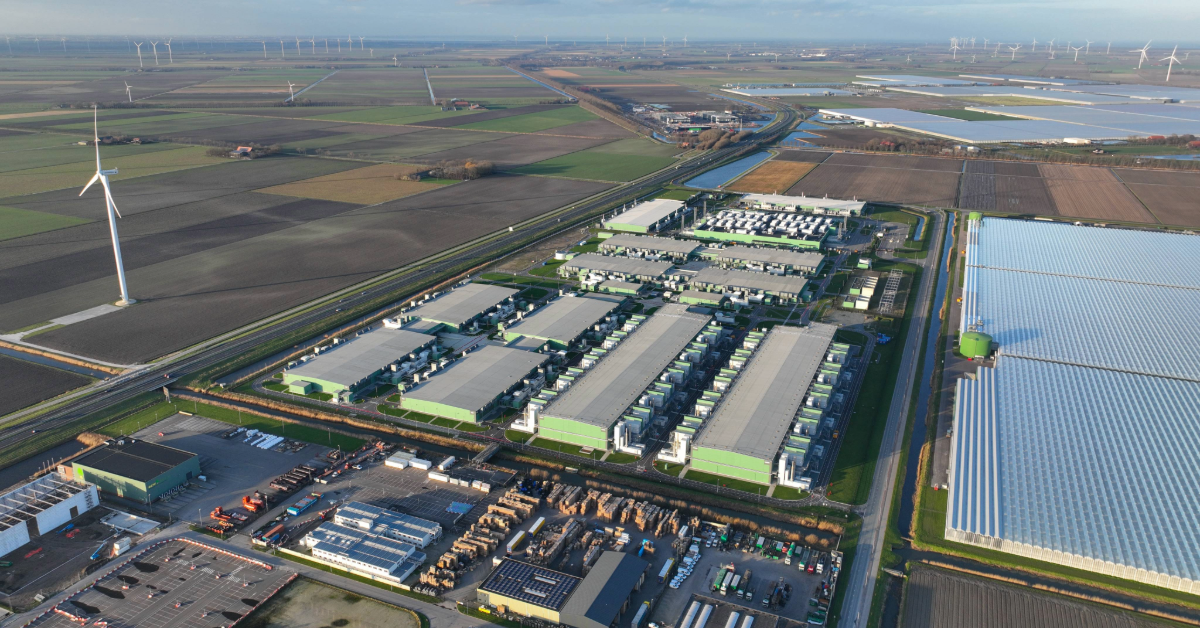Building Tomorrow's Data Centers: Navigating Power Grid Constraints and Energy Demands
How the Data Center Boom Will Impact Power Grids In 2022, data centers (excluding cryptocurrency mining operations) consumed approximately 460 TWh of...
4 min read
 Team Energy Exemplar
:
December 9, 2024
Team Energy Exemplar
:
December 9, 2024

The data center market is expanding at an unprecedented rate. The U.S. colocation market alone has doubled in size over the last four years. Colocation, or “colo,” facilities are third-party data centers that house the servers and computing hardware of multiple businesses. As of mid-year 2024, U.S. colocation capacity, measured in the power consumption of the maximum number of servers a data center can house, stands at 12 GW with an additional 5.3 GW under construction and a further 22 GW in the development pipeline.
The global data center market is seeing similar growth, with nearly 20% year-over-year (YOY) growth in Europe and 15% YOY growth in Latin America. The data center market in Singapore is so tight that existing data centers have just a 1% vacancy rate.
This extraordinary market expansion shows no sign of slowing down. By 2030, the global data center market is expected to be worth more than $437 billion, growing at a 10.9% compound annual growth rate between 2023 and 2030.
However, one significant challenge tempering the data center industry’s rapid expansion is the lack of reliable electricity to power these critical facilities, which makes site selection for new developments incredibly complex.
In this article, we’ll look at what’s driving data center growth and explore how modeling solutions can help data centers optimize their siting and forecasting efforts.
The amount of data processed by data centers has been on a meteoric rise for nearly a decade, thanks to the growing number of connected smart devices, remote work, high-speed streaming and increased access to the internet. Between 2015 and 2019, data center workloads tripled, and today these critical facilities are an essential part of our modern economy.
Interestingly, the rapid workload expansion witnessed between 2015 and 2019 did not correspond to a significant uptick in energy consumption, with consumption remaining at roughly 200 TWh per year during that time frame. This can largely be attributed to improvements the industry made around energy efficiency, which offset any increases in demand. Today, however, the landscape is entirely different. The explosion of power-hungry artificial intelligence (AI) applications is causing data center electricity loads to skyrocket well beyond the mitigation capabilities of energy efficiency programs.
AI models, especially those involved in generative tasks such as those performed by large language models (LLMs), require considerably more electricity than typical internet browsing. With the increased power demand of AI, global data center power consumption is expected to increase 160% by the end of the decade. Today, data centers account for 1% to 2% of total global power consumption; by 2030, it’s expected to be 3% to 4%.
As AI adoption accelerates across every sector of the economy, data centers are rushing to keep pace with the growing demand for facilities to house the technology’s supporting hardware and infrastructure –– and that means building more data centers. However, challenges around power and water availability, weather, and even local regulations and policies make data center site selection in the AI era increasingly difficult.
Fortunately, robust analyses can help optimize data center site selection. When considering site locations for these power intensive data centers, it’s important to take the following into account:

Siting a data center so that it has reliable and clean electricity is no easy task. In this infographic, learn some of the key factors that should be considered.
Gathering, managing and leveraging all these critical data points has made modern data center site selection increasingly complex. Fortunately, energy modeling with powerful solutions like Energy Exemplar’s PLEXOS® Platform, can simplify the process of analyzing and visualizing data needed for data center siting decisions.
PLEXOS® features state-of-the-art data center siting capabilities that allow for modeling of traditional and renewable power accessibility, transmission congestion analysis and the development of highly accurate demand forecasts for each new data center. The platform also allows data center owners to determine where data center assets should be built for optimal outcomes and with the lowest risk.
Highly visual, the platform is designed to enable faster, better-informed decisions around the value of potential data center sites. PLEXOS® also excels at nodal analysis and Monte Carlo stochastic analysis, which means the platform can handle a wide variety of hypothetical future states, empowering decision-makers to identify which have the best benefit-to-cost ratio.

How the Data Center Boom Will Impact Power Grids In 2022, data centers (excluding cryptocurrency mining operations) consumed approximately 460 TWh of...

Originally published on Energy Connects The explosion of data-driven technologies, particularly artificial intelligence (AI), has catapulted data...

Originally published on Utility Dive on November 11, 2024